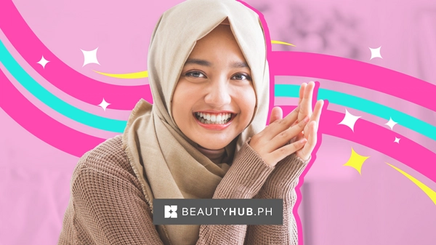
Your hijab style can result in thinning hair. A study in the National Institute of Health Journal notes that many Muslim women who wear a hijab experience and even . Although it’s not often talked about, hair loss from wearing a hijab can be a big concern.
Hijab hair loss, also known as hijab alopecia, is a form of traction alopecia. It’s a condition that occurs when the hair roots experience chronic tension for an extended period. A hijab constantly pulling at your roots can traumatize the hair, damage the follicle, and cause it to fall out.
Even if you cover your hair most of the day, it’s still important to take care of it properly. You can still don your favorite hijab style while keeping your . Here's how you can prevent hair problems from wearing a hijab, from using hair-friendly materials to paying more attention to your .
Express Your Hijab Style with Hair-Friendly Materials
Have you ever experienced headaches, irritation, or pain from wearing your hijab? What about greasy scalp and hair? A suitable hijab base is important for these reasons. A study in Our Dermatology Online Journal recommends avoiding hijab caps or underscarves that are made of synthetic materials or a blend of synthetic and natural fibers.
As your body temperature rises during the day, it can absorb the chemicals from these textiles through your scalp. The heat can also release formaldehyde, which can cause problems for your hair. Choose cotton, silk, or bamboo materials for your underscarf instead.
For your hijab fabric, choose one that’s soft and breathable, such as silk, chiffon, and cotton. These materials are also less likely to cause sweat and dirt buildup. Avoid fabrics like polyester and nylon, since they can rub against your hair. This can cause , as well as greasy scalp.
Choose a Loose Hairstyle
When wearing a hijab, you want a hairstyle that keeps your hair secure. Hijab wearers usually tie the hair tightly, which is not the right way to protect your hair, according to a Queen’s University study.
Hairstyles such as can cause tension at the crown of your head, making it sensitive and painful to touch. This can cause hair loss at the temples, which is clearly something you want to avoid. Choose a low bun or ponytail since they don’t pull on the hair as much. As a side note, you might want to use scrunchies instead of elastic bands because they’re kinder to hair and reduce tension.
To care for frequently styled hair, use Dove Hairfall Rescue+ Keratin Tri-Silk Serum Shampoo. This shampoo has DynaZinc complex that nourishes from the roots to tips and fortifies hair fibers, making your hair healthy and resilient.
Change & Wash Your Underscarf Regularly
Covering your hair most of the day means wearing an underscarf for a long time under your hijab. It makes an underscarf susceptible to sweat, dust, , and natural oils. All of this can build up quickly, causing your underscarf to smell and make your hair greasy. You can get breakouts near the forehead or around the hairline. Change and wash your underscarf as soon as it becomes sweaty.
By the way, don’t wear a hijab while your hair is wet! A study in the International Conference of Education on Science, Technology, Engineering, and Mathematics notes that putting any material on will prevent proper drying of the hair and scalp. Chronic moisture on the scalp is the ideal breeding ground for dandruff and fungus.
Establish a Proper Hair Care Routine
After keeping your hair tied up all day, take the time to let it breathe with a . It’s essential to let your scalp and hair get the moisture and oxygen they need. According to the Indonesian Journal of Pharmacy and Pharmaceutical Sciences, opt for cool water in the shower. It temporarily , flattens hair follicles, increases their ability to grip your scalp, and helps reduce hair loss.
To strengthen your hair and protect it from frequent styling and tension, use Sunsilk Strong & Long Shampoo regularly. This formula has biotin and aloe vera that work together to nourish your hair deeply. It helps your hair grow stronger so you can experiment with more hijab styles.
Give yourself a gentle massage on the head, which helps stimulate blood circulation and boost hair growth. As advised in the Medical Scientific Journal, you can let your hair dry naturally instead of using a hairdryer since excessive heat can weaken the scalp and hair.
Do not let hair problems hamper your hijab style. Maintaining your religious values shouldn't have to come at a cost.